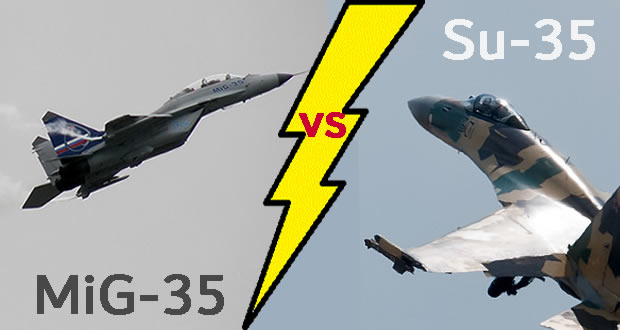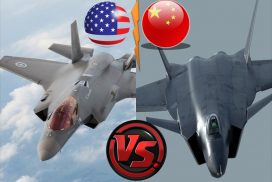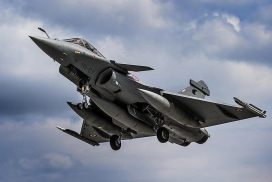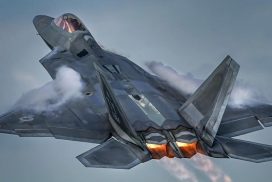For the last two years, there have been many speculations about Vietnam negotiating with Russian defence contractors to purchase their most advanced combat aircraft. Expectations are robust now, domestically and internationally, in part because Vietnam is currently engaging in one of its most ambitious modernization processes since the country opened up more than 30 years ago, under the rising tension with its giant northern neighbour. However, it is the fierce debate inside Vietnam about the potential candidates to the legendary, but already decommissioned, Mikoyan-Gurevich MiG-21 Fishbed that is less known to outside observers. This article analyzes MiG-35 vs Su-35.
Defining the Vietnam People’s Air Force (VPAF) operating doctrine prelude to the MiG-35 vs Su-35 competition
The Vietnam People’s Air Force is highly well known for the use of their legendary MiG-21 against the United States Air Force (USAF) during the Vietnam War. By applying what is called “guerrilla warfare in the air”, North Vietnamese pilots at the time were able to shoot down a surprisingly large number of American fighters despite the fact that the North was in a much more inferior position vis-à-vis the American both numerically and technically. According to numerous accounts, the VPAF during the war has produced many more aces than the USAF, several of them even had nine kills (no American pilot achieved more than five kills).
There were many reasons behind the outstanding performance of the North Vietnamese pilots, but three things stood out: the technical capability of the MiG family; the tactic exploited by the VPAF; and the spirit and skills of the pilots themselves. These overall characteristics were beautifully weaving through what was called “guerrilla warfare in the air”, in which the pilots were also supported by the advantages of flying over friendly territory and of collaboration with radar and anti-aircraft units.
Initial fighting plans and tactics of the VPAF were created through interaction with captured US aircrews and the study of photographs of US aircraft. But the overall nature of this guerrilla approach is defensive with most of the fighting taking place over North Vietnamese airspace. The main principle of the tactics used by VPAF pilots at the time was above all element of surprise, which was embedded in the operational doctrine of the force. In the heart of the battle, the pilots stuck to the basic tactics: shoot down as many enemies as possible, protect your own aircraft, engage only in a close dogfight, and concentrate the attacking force against a single air group.
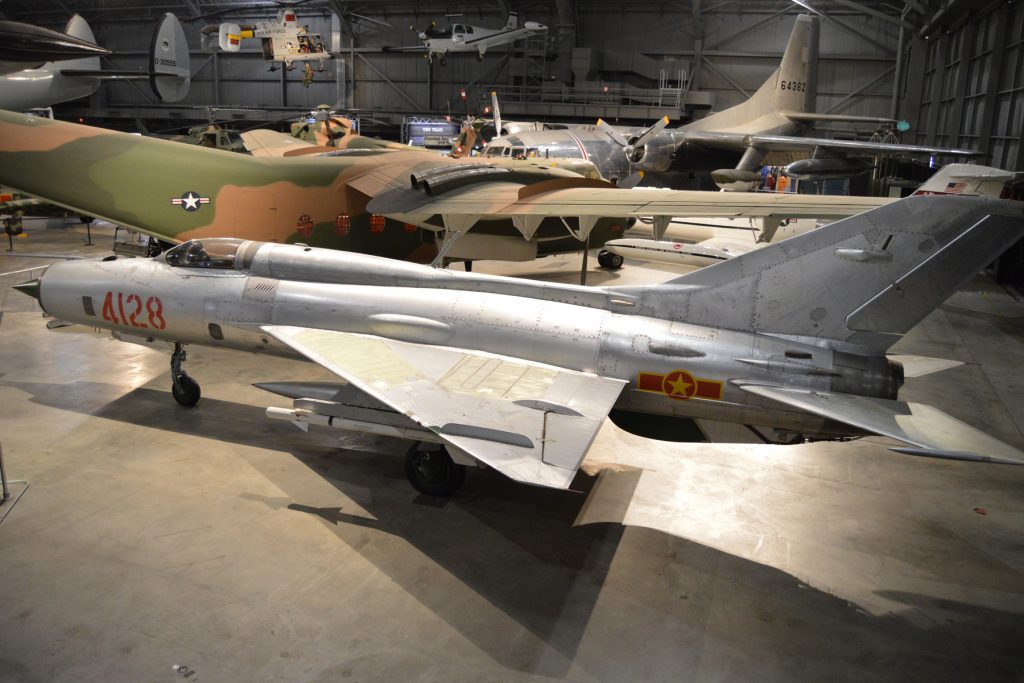
It was just until recently that the MiG-21 squadrons of the VPAF were allowed to retire (really recent we mean, around three years ago in 2015). The commissioning of four Sukhoi Su-27/30 fighter regiments has changed the face of the VPAF from almost an experienced but outdated air force into quite a force to be reckoned with within the region. The retirement of the legendary MiG-21s, however, has posed many questions about the future of the VPAF itself and of the doctrine, it will rely on in future warfare. Whether or not the role of an interceptor like MiG-21 is still retained in the future combat doctrine of the VPAF? If yes, then which kind of tactic or doctrine or operational concept it would utilize in order to adapt to new security challenges coming from a totally different geo-strategic paradigm?
It could be safe to say that the VPAF’s doctrine from the Vietnam War until now is evolving around the principle of fighting against a bigger and more advanced adversary, that of an “asymmetrical warfare” on the sky as reflected by the doctrine of “guerrilla warfare in the air”. The differences, however, lie on the scale and scope of the operational environment in which the VPAF carries out its missions. First, the service now has to operate not only within the boundary of Vietnam’s geographical land mass but also on the sky above the South China Sea and even, in some cases required by tactical and strategic calculations, on enemy’s airspace.
Second, the most potential adversaries now possess a huge amount of advanced fighters of the 4th and even 5th generation, which are embedded with state-of-the-art technologies, from stealth capability to advanced avionics to networked data fusion. Third, the VPAF, and the Air Defense Force in general, nowadays do not and should not operate alone. Within a bigger security strategy framework, besides the traditional mission of defending Vietnamese airspace from enemies’ air forces, the VPAF will be playing a vital role in the overall “asymmetrical warfare” of the future. Its additional tasks now are conducting joint-operational missions alongside the Vietnam People’s Navy (VPN) on the maritime theatre of the South China Sea as well as supporting the Army in defending Vietnam’s long border against possible invading forces.
All of these operational requirements oblige to the induction of the Net-Centric Warfare (NCW) tactics. Basically, NCW is the integration and interconnection of all different parts in the battleground, allowing them to share information among themselves (thus creating situational awareness) and contributing to a fast decision-making process, resulting in quick and correct actions against an enemy. This is usually carried out by means of datalinks systems hosted in ground/sea based installations, AEW&C (Airborne Early Warning and Control) aircraft or even medium-sized fighter aircraft.
This “asymmetrical warfare” doctrine of today VPAF would definitely inherit and apply many of the past tactical and strategic experiences, with suitable modifications in order to adapt to the style of warfare of the 21st century. The most important priority now in modernizing the VPAF would be to find suitable, modern fighters capable of carrying out various tasks and missions required in the doctrine, at the time the legendary MiG-21s had been put out of service.
Does the VPAF still need an interceptor with the air-superiority capability to replace the MiG-21, or what it needs now is a multirole fighter capable of covering a bunch of different tasks and missions?
The Mikoyan MiG-35 “Fulcrum-F”
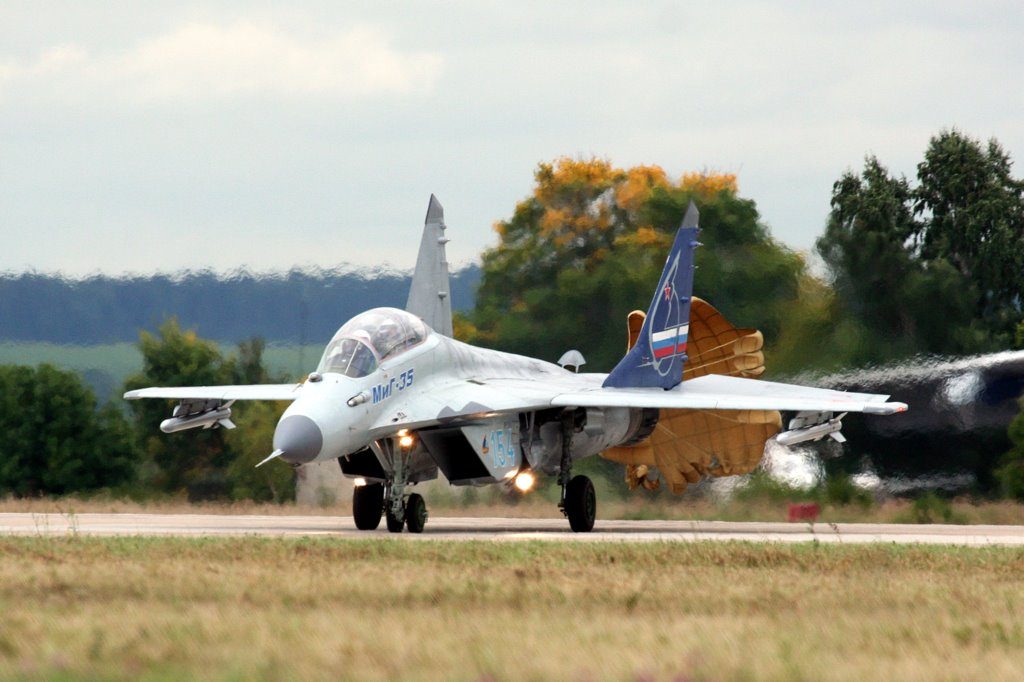
The MiG-35, nicknamed “Fulcrum-F” by the NATO Air Standardization Coordinating Committee (ASCC), is an evolution of the MiG-29 “Fulcrum” which first flew in 1977 as an air defence combat aircraft with a minor capability to perform reconnaissance and strike missions, like the MiG-21. The “Fulcrum-F” has a quadruple-redundant Fly-By-Wire (FBW) control system and emerged in 1986 as an effort to augment the multirole capabilities of the basic MiG-29 and carries up to 6.500kg (14.330lb) of guided/unguided weapons (including medium/short-range air-to-air missiles and air-to-surface missiles) on 9 hard points. The armament is controlled by the PrNK-29KS system, comprising the Zhuk-M1SE radar and the OLS-UEM infrared search and track system (IRST).
The former has a maximum detection range of up to 120km (74.5 miles) against an aerial target with a Radar Cross Section (RCS) equals to 5m2; up to ten such targets can be simultaneously detected and four attacked at once. As for surface targets, two can be attacked at once within a maximum range of 250km (155 miles). The MiG-35’s IRST has a range of 90km (56 miles) whilst the aircraft’s ferry range is 3.000km (1.864 miles) with fuel drop tanks. Its top speed is 2.100km/h (1.305mph) at optimum altitude and 1.400km/h (870mph) at sea level, with a service ceiling of 16.000m (52.494ft).
The Sukhoi Su-35 “Flanker-E”
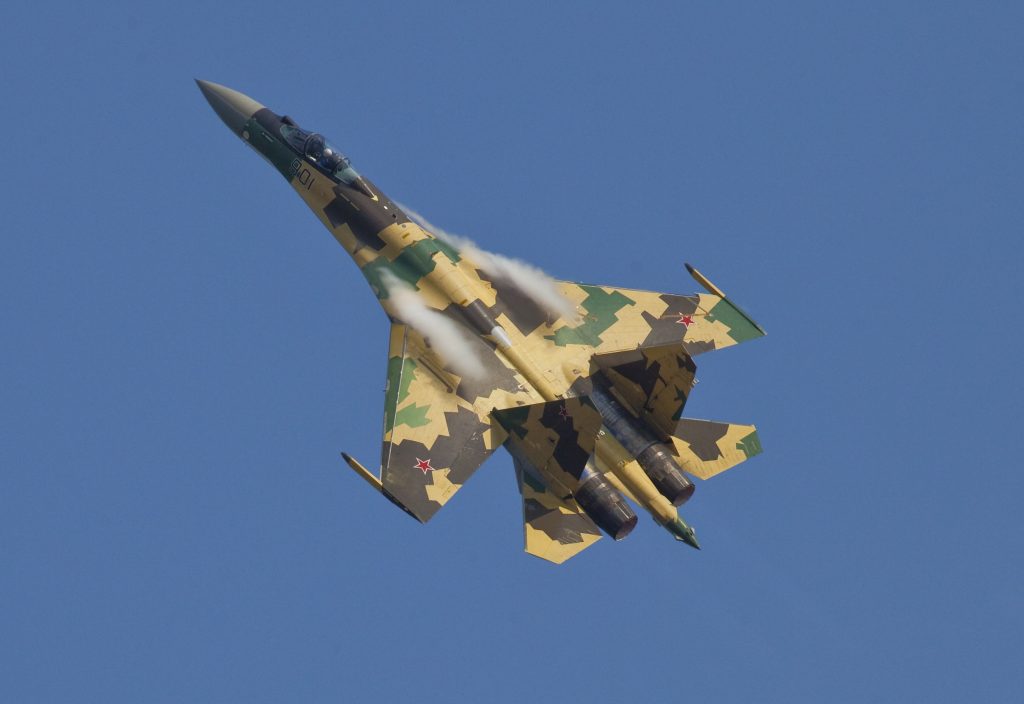
The current Su-35 is the definitive incarnation of a program that appeared in 1988 planned to enhance the original capabilities of the Su-27 (ASCC: “Flanker”), which first flew 11 years earlier as a heavy fighter to counter the (then) McDonnell Douglas F-15A “Eagle”. The “Flanker-E” also has the same kind of FBW as the MiG-29M, but it carries up to 8.000kg (17.637lb) of ordnance on 12 hard points. The armament, made up basically of the same items as those carried by the “Fulcrum-F”, is managed by the KPrNO-35 control system, comprised of the Irbis-E radiolocation system (with the radar itself and Khibiny-M Electronic Counter Measures suite) and the OLS-35 IRST. Against an aerial target with a 3m2 RCS, the Irbis-E has a maximum range of 350km (217 miles).
Thirty of such targets can be detected at once, with eight of them attacked at once. Talking about surface targets, four of them can be simultaneously detected (with one attacked). Large ships being detected at up to 400km (249 miles). The Su-35’s IRST has the same range as the MiG-35’s IRST and it can engage up to four aerial targets at once. Its ferry range with fuel drop tanks is 4.500km (2.976 miles) whilst the top speed is 2.400km/h (1.491mph) at optimum altitude and 1.400km/h (870mph) at sea level. Service ceiling is 18.000m (59.055ft).
Beside the MiG-35 and the Su-35, other options that satisfy the VPAF’s requirements
In addition to its doctrines and needs, VPAF also has a couple of specific requirements to be met by the next combat aircraft it will choose. The selected model must be a brand new and combat proven one. This leads to a wide spectrum of options, from US aircraft (such as the Lockheed Martin F-16C/D Fighting Falcon and F-18E/F Super Hornet) to European fighters (e.g. Saab Gripen C/D, Dassault Rafale F3, Eurofighter Typhoon, MiG-35 and Sukhoi Su-35). However, given the VPAF tradition of operating first-line combat aircraft of Soviet/Russian origins only, in the end, it comes down to MiG-35 vs Su-35 represents the best option to most of the VPAF requirements, with the latter being the best option as will be demonstrated.
Conclusions: MiG-35 vs Su-35
The VPAF intends to acquire enough new fighters to equip 1-2 regiments (12-24 aircraft). Assuming that it is not a wealthy force, the flyaway cost of the Fulcrum-F, when compared with that of the Flanker-E, would turn the former as the ideal option to replace the Fishbed. However, the flyaway cost is just one of the several variables to be considered in a selection like this, where crew training, spare parts and weapons represent packages represent additional costs, known as procurement costs. And it is common these overall costs are partially or totally compensated for national goods using offset deals.
The VPAF already dominates the maintenance procedures of its Flanker fleet and this is another positive factor for the Su-35. There is an increasing trend, adopted by many air forces around the world, of standardizing their frontline fighter fleets with one type. This trend, even more, important to small air forces, saves money spent with different crew training, maintenance procedures, spare parts and weapons. The selection of the MiG-29M would represent a bunch of additional, unnecessary costs to the VPAF, which already operates a considerable fleet of Su-27/30 Flankers of which the Su-35 is derived from.
It must be remembered the Fulcrum-F has not taken part in any conflicts. Conversely, the Flanker-E has recently seen action in Syria as part of the Russian Aero-Cosmic Forces (also referred to as VKS, Vozdushno-Kosmicheskiye Sily). And to be a combat proven aircraft is, already mentioned above, one of the key requirements established by the VPAF when it is selecting its next frontline combat aircraft.
Last but not least, there are several factors, of pure tactical nature, that favour the acquisition of the Flanker-E. Compared to the MiG-29M, the Su-35 is the only candidate capable of carrying the NPO Mashinostroyeniya “Yakhont” (“Ruby”) heavy supersonic anti-ship missile, which combined with the Su-35’s range poses a credible threat to the Chinese naval forces in the South China Sea with the missile’s supersonic speed and 300km (162 miles) range. The Su-35 can be refuelled in the air; the MiG-29M cannot. This fault imposes serious drawbacks as it limits the useful time over the operational area.
Finally, the Su-35S operated by the VKS is expected to receive the new “Postskriptum” datalink system any time soon. Also known as Izdeliye 95K6, it is designed to provide complete situational awareness among all the country’s Armed Forces by transmitting and receiving all the relevant information such as positions and remaining fuel and weapons. VPAF already operates a similar system aboard its fleet of Flanker fighters, the TKS-2M, capable to connect up to 16 aircraft at once, but only the “Postskriptum” would give the VPAF a real Net-Centric Warfare capability.
Let us know in the comment section below, your thoughts on the MiG-35 vs Su-35. Also comment, if you think any other aircraft Vietnam should consider.

